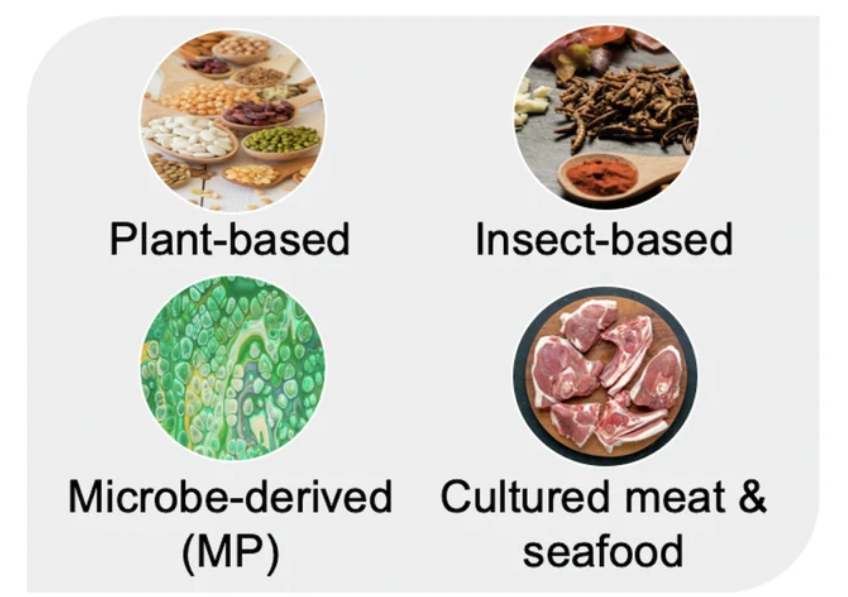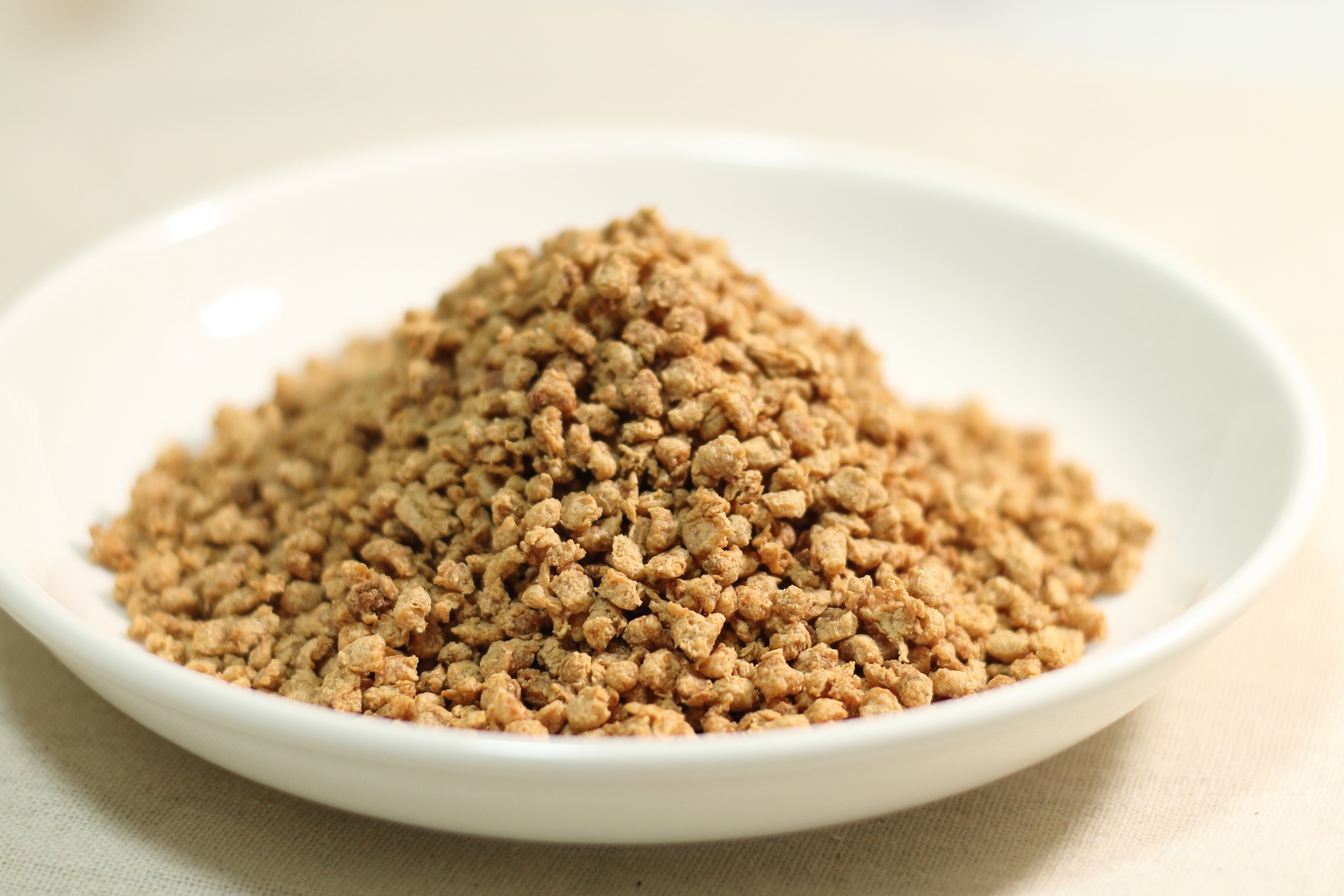- The Future of Alternative Protein: Challenges Towards a Sustainable Food Supply
- What is the environmental impact of alternative proteins as of 2024?
- What are the challenges of utilizing alternative proteins in the food industry as of 2024?
- Creating a regulatory framework
- The Outlook for Alternative Protein Research and Development
The Future of Alternative Protein: Challenges Towards a Sustainable Food Supply
With the global population expected to reach 9.7 billion by 2050, food production that provides sufficient nutrition for everyone has become a critical issue. In particular, there are concerns that the increasing demand for protein cannot be met solely by traditional livestock. Additionally, livestock production is a major source of greenhouse gases (from cattle belching and the gases produced by manure decomposition), and its impact on climate change has been pointed out. To address these challenges, Alternative Protein (AP) is gaining attention.
Alternative proteins include plant-based, insect-based, microbial-based, and cultured meat types. Although the pace of research varies, progress is being made. Plant-based proteins are the most widely accepted, and their market growth is significant. However, the market size for alternative proteins is still small, and factors such as product characteristics, cost, and consumer resistance mean that they are not yet widely accepted. Perhaps few people have actually bought and eaten them?

Moreover, the production of alternative proteins still faces numerous cost-related challenges. Many consumers feel that insect protein and cultured meat are “unnatural,” leading to resistance in trying these products. Therefore, it is crucial to properly evaluate and communicate the environmental and health impacts of alternative proteins to consumers. Furthermore, the lack of international guidelines and regulations is another factor hindering the widespread adoption of alternative proteins.
The review I read analyzes the environmental impact, usage challenges, future trends, and opportunities of alternative proteins as of 2024. It may provide valuable insights for scientists, the food industry, and governments to support the development of alternative proteins and contribute to global food security.
Reference: Current challenges of alternative proteins as future foods.(Published: 15 August 2024)
What is the environmental impact of alternative proteins as of 2024?
Alternative proteins are said to have significantly lower greenhouse gas emissions and land use compared to traditional livestock. Plant-based and insect-based proteins have much lower environmental impacts than livestock production, and microbial-based proteins are highlighted for being producible on even less land.
However, the overall environmental impact of alternative proteins throughout their entire supply chain is not yet fully understood. This type of research, known as “life cycle assessment studies,” considers a wide range of factors, such as which raw materials are used, where the raw materials are sourced, where the products are made, and where they are sold. The energy required for the extraction of plant-based or insect-based proteins is substantial, and wastewater is also generated. There is a need for technological improvements to accurately evaluate and mitigate these environmental burdens.
The environmental impact of producing cultured meat and seafood is also still in the early stages of research, with carbon footprint and energy consumption cited as major challenges. Efficient use of culture media is seen as key to reducing future environmental impacts, but current technologies are still far from achieving this goal.
Overall, while alternative proteins are considered to have lower environmental impacts than traditional livestock, it is important to regularly evaluate these impacts as technology advances and to provide accurate information to consumers and stakeholders.
What are the challenges of utilizing alternative proteins in the food industry as of 2024?
Technical Challenges
It is challenging to reproduce the sensory experience of traditional animal proteins with products made from alternative proteins, which makes it difficult for consumers to accept them. This challenge is mainly due to differences in the molecular structure and physicochemical properties between alternative proteins and animal proteins.
Plant-based and insect-based proteins partially denature during extraction and processing, making it difficult to replicate the texture of meat. High-temperature extrusion techniques are used, but the resulting products are often noted for having a different texture and lacking the juiciness of conventional meat. Additionally, alternative protein products are surprisingly often laden with additives, which may conflict with the natural-minded trends of some consumers who wish to avoid additives.
Furthermore, mimicking the taste and flavor is another significant challenge. Plant-based and insect-based proteins have distinctive flavors that make it difficult to replicate the taste of animal-based products. Microbial-based proteins are also reported to have flavors that can easily change due to the extraction process and non-protein components.
For cultured meat and seafood, scaling up production is a major challenge. In general, large-scale production can take advantage of economies of scale to lower costs, but with current culturing techniques and costs, it is uncertain whether starting large-scale production will lead to profitability. Additionally, large-scale cultured proteins have low levels of myoglobin and fat, resulting in colors and flavors that differ from conventional meat, necessitating technical improvements to address these issues.
Overall, there are many technical challenges to be overcome before alternative proteins can be successfully marketed as food, and further research and technological advancements are required to achieve quality comparable to conventional animal products.
What is the nutritional value of alternative proteins?
The health benefits of alternative proteins include being lower in saturated fats and cholesterol and higher in dietary fiber. However, these products are often classified as “ultra-processed foods,” and there are still many unknowns regarding their health effects.
Research analyzing the nutritional profiles of alternative protein products indicates that they have lower energy density and saturated fats than animal-based products but are higher in dietary fiber. However, they also tend to have higher salt content. Plant-based proteins are often said to have lower protein quality due to their lower content of essential amino acids. In contrast, insect-based and microbial-based proteins have essential amino acid contents comparable to animal-based products, though the amino acid composition varies depending on the species and conditions.
Additionally, while animal-based products are considered excellent sources of micronutrients such as vitamin B12, iron, and zinc, it has been pointed out that these nutrients are lacking in plant-based, microbial-based products, and cultured meat. It is possible to fortify these nutrients, but further research is needed to confirm their bioavailability.
Overall, whether alternative proteins are a healthier choice than conventional animal proteins remains uncertain, and further scientific evidence and research are needed.
What about safety?
Concerns about the safety of alternative proteins, particularly regarding allergens and contaminants, remain significant. There are still many issues to be addressed to determine whether alternative proteins are safe for human consumption.
Allergen Issues:
The new “forms” of alternative protein products could potentially trigger reactions different from known allergens. While it is well-known that nuts and soybeans can cause allergies, other emerging plant-based proteins and insect proteins have not yet been thoroughly analyzed. Insect-derived proteins pose potential risks to individuals with shellfish allergies, and microbial-based proteins also carry risks of allergic reactions.
Contaminants:
Alternative protein products are at risk of contamination with heavy metals, pesticides, mycotoxins, and other harmful substances during production. Mycotoxin contamination has been reported, particularly in plant-based meat substitutes, posing potential health risks to consumers and requiring careful monitoring. Microbial-based proteins also raise concerns about toxic metabolites produced by microbes and contamination by undesirable microorganisms.
Safety of Cultured Meat and Farmed Seafood:
For cultured meat and seafood, there is little direct evaluation of food safety at present, with concerns about microbial contamination and zoonotic disease risks being raised. Stressed cultured cells may produce histamine and other harmful substances, which could accumulate in the final product.
The safety of alternative protein products requires careful evaluation, particularly concerning allergens and contaminants. Addressing these issues will require further research and stronger regulations.
Creating a regulatory framework
One of the hurdles to market expansion for alternative proteins is the lack of clear and transparent standards and guidelines at the national and global levels. A regulatory framework is essential to ensure consumer safety and promote fair trade.
Alternative proteins are treated as “novel foods” in many countries, with varying regulations regarding food safety and ingredients. The EU has implemented novel food regulations (EC 2015/2283) since 2018, while the U.S. lacks specific definitions or regulations for novel foods, instead treating them as food additives or following the Generally Recognized as Safe (GRAS) standard. In Asia, only China, South Korea, Singapore, and Thailand have specific regulations for novel foods.
Countries like Singapore and Thailand have been establishing more concrete guidelines for the safety evaluation of alternative proteins. The Singapore Food Agency (SFA) mandates safety evaluations of new ingredients and requires companies to adopt testing methods that comply with international standards. In Thailand, clinical studies are required to assess safety.
The differing regulatory frameworks across countries, particularly regarding the definition and safety evaluation of novel foods, hinder the widespread adoption and development of alternative proteins. To ensure that consumers can make safe and informed choices, unified regulations and clear labeling are necessary.
The Outlook for Alternative Protein Research and Development
The increase in alternative proteins is leading to the creation of new protein sources and technological innovations. Particularly, the exploration of new protein sources is an important research area for addressing challenges such as nutritional quality, technical properties, and allergenicity.
As new protein sources, algae, seaweed, and aquatic plants, which grow rapidly and are highly nutritious, are gaining attention. For example, the aquatic plant Wolffia spp., a member of the duckweed family, is said to provide nine essential amino acids, dietary fiber, and vitamin B12. Additionally, the use of locally grown native plants is also progressing, contributing to crop resilience and reducing carbon emissions. Spin-off research using seaweed is also interesting; for instance, seaweed-based livestock feed is said to reduce livestock burping and lower greenhouse gases without altering meat quality. I hope to see more research like this.
Protein extraction and processing technologies are also evolving, with supercritical fluid extraction and high-pressure processing being used to remove off-flavors and improve yields. Moreover, in the field of cultured meat and seafood, advancements in gene editing and cell culture technologies are being made. Fermentation technology also plays an important role in the production of alternative protein raw materials, with the potential to improve the flavor and quality of products.
Research on the allergenicity and impact on gut microbiota of alternative proteins is ongoing, but many challenges remain. Enzymatic cross-linking with transglutaminase and protein hydrolysis are being studied as methods to reduce allergenicity. Furthermore, the development of methods for detecting allergens and toxins in the production process and final products of AP is urgently needed.
Discussions on the labeling and standards of alternative proteins are ongoing among international organizations, including FAO/WHO, and unified regulations are needed to ensure consumer safety for new food products.
The increase in alternative proteins is expanding opportunities for new protein sources and technological innovations. I believe it won’t be long before they become commonplace on our tables. For this to happen, I hope research continues to advance in understanding their safety and health impacts, and that appropriate regulations are established.



コメント